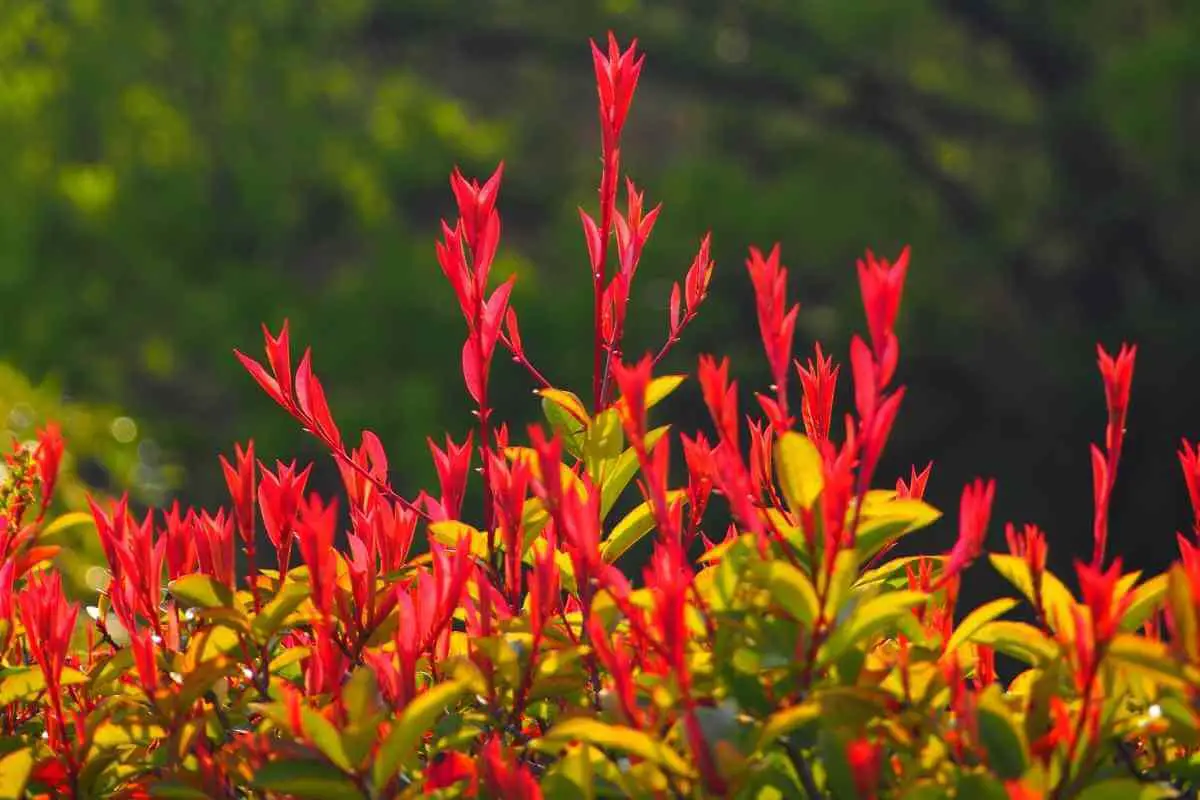If you are looking for a riot of colour in your garden, red evergreen shrubs are perfect for providing year-round interest and breaking up the monotony of green.
These distinctive plants have something for everyone, from delightful pinks and purples, to the drama of a rich burgundy.
In This Article: We share 11 red evergreen shrubs that will make a beautiful addition to your garden. When you look at these beautiful images you’ll see why these red evergreen shrubs have an enduring appeal.
Quick Question: Why are These Evergreen Shrubs Red?
The red colouration in the foliage of these plants are because of anthocyanin pigments.
In fact, these pigments are present in all leaves, but the red evergreen shrubs are producing anthocyanins in much higher concentrations in their stems and leaves.
Direct sunlight can make this redness more pronounced.
Feast Your Eyes on These Eleven Stunning Red Evergreen Shrubs, Perfect for Any Garden or Balcony!
1. Photinia Serratifolia Crunchy ‘Rev100’ Photinia
Also Known As: Crunchy photinia, Photinia serratifolia ‘Rev100’PBR, Photinia serrulata ‘Crunchy’
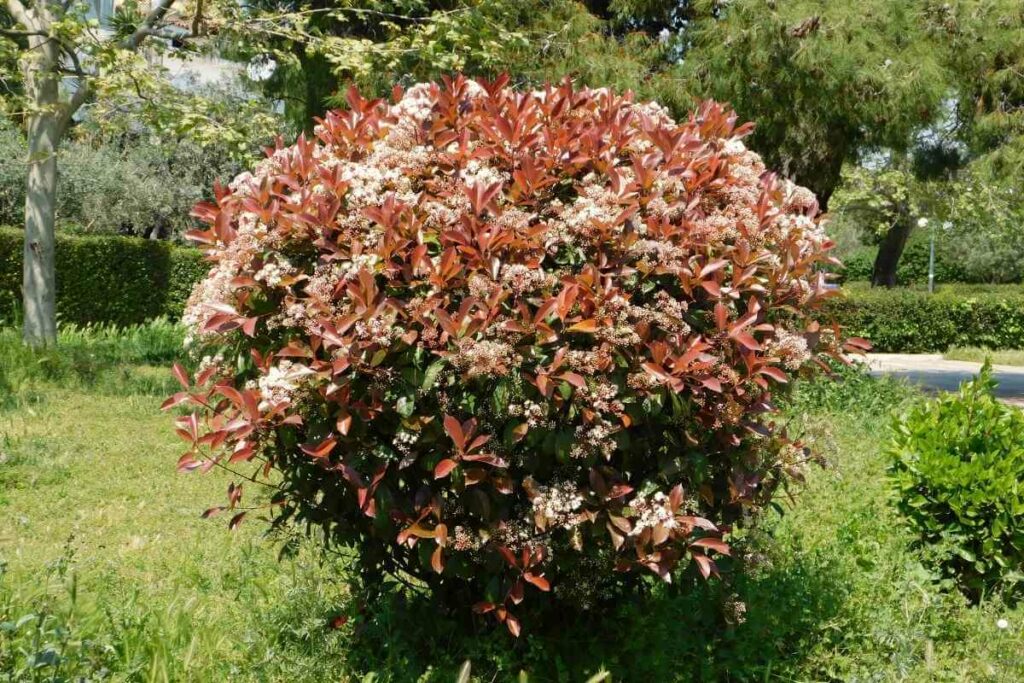
Description
This is a fast-growing evergreen shrub that has coppery-red new foliage.
The leaves have a distinctive serrated edge. Crunchy photinia puts on a colourful display that is most pronounced in the spring, then the new leaves mature and darken to a deep red then green.
It is compact and densely branched, which lends it to container gardening or cultivation as a hedge.
Plant this evergreen in fertile, well-drained soil with good sunlight.
Pruning Crunchy back in early spring will provide you with the maximum bright young leaves.
2. Cordyline Australis ‘Red Star’
Also Known As: Cabbage Palm
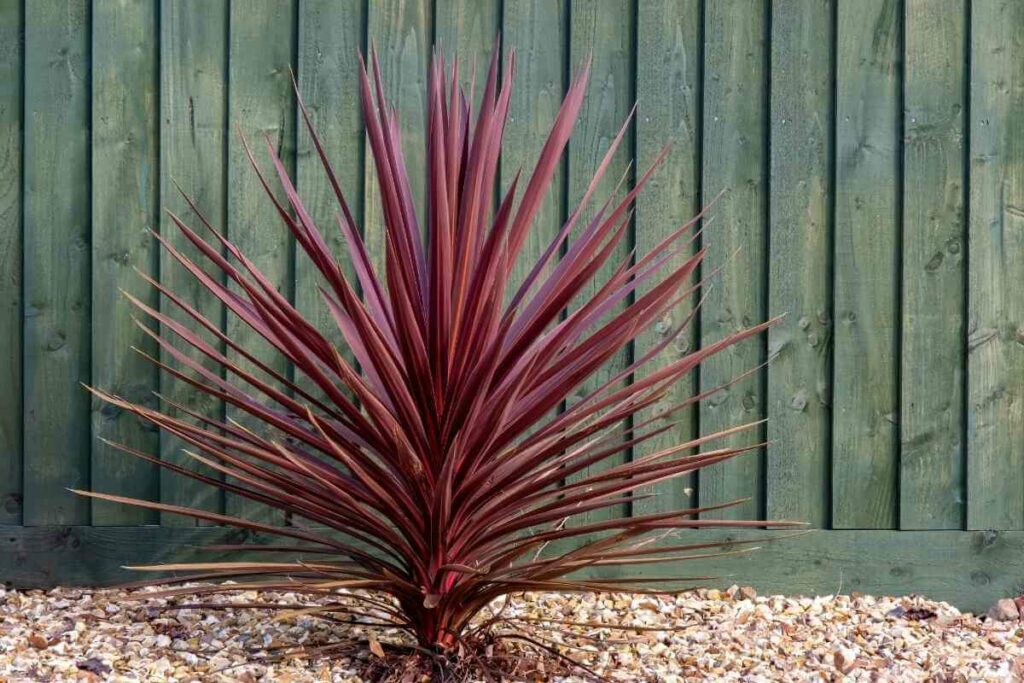
Description
If you are keen to make a statement with a striking red evergreen this Antipodean native has a grand palm-like appearance without the fuss and fanfare of a palm tree.
The sword-like burgundy leaves of cordyline Australis will provide year-round drama that is only eclipsed by its summer flowering with white flower spikes that have a delicious aroma.
As an exotic plant, it fares best if not exposed to cold and frost.
Many gardeners will plant cabbage palm in a container and keep it on the patio, to ensure that it gets enough warmth and can be moved indoors in the winter.
In spring, dead leaves or front-damaged branges can be cut back and overtaken by the new shoots.
3. Photinia × Fraseri ‘Red Robin’
Also Known As: Photinia, Christmas Berry, Red Robin
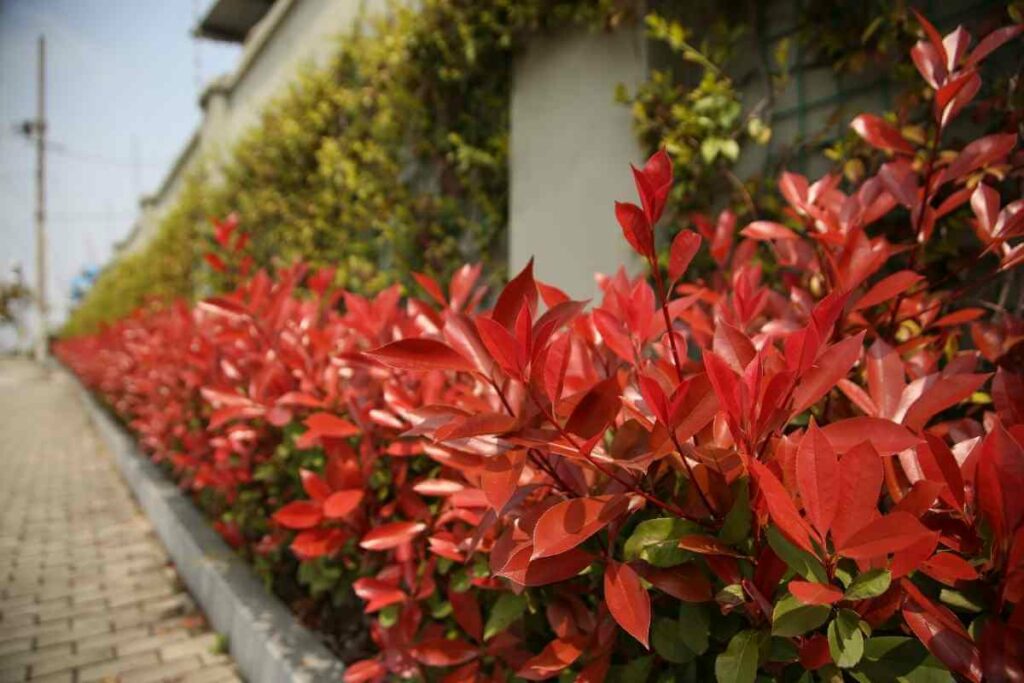
Description
This delightful shrub provides bold red toned foliage which has a sheen that catches sunlight.
Though you can successfully plant it in partial shade, full sun really brings out the best of this plant, inducing not only the parrot-red tone but also flowering.
This fast-growing evergreen turns up the wattage with the large round heads of delicate ivory flowers which often yield red fruits.
Make a home for this fun plant in soils that are well-fed with good drainage and protect it in winter from frosts.
4. Coprosma Repens ‘Pacific Dawn’
Also Known As: Coprosma, Pacific dawn, Tequila Sunrise
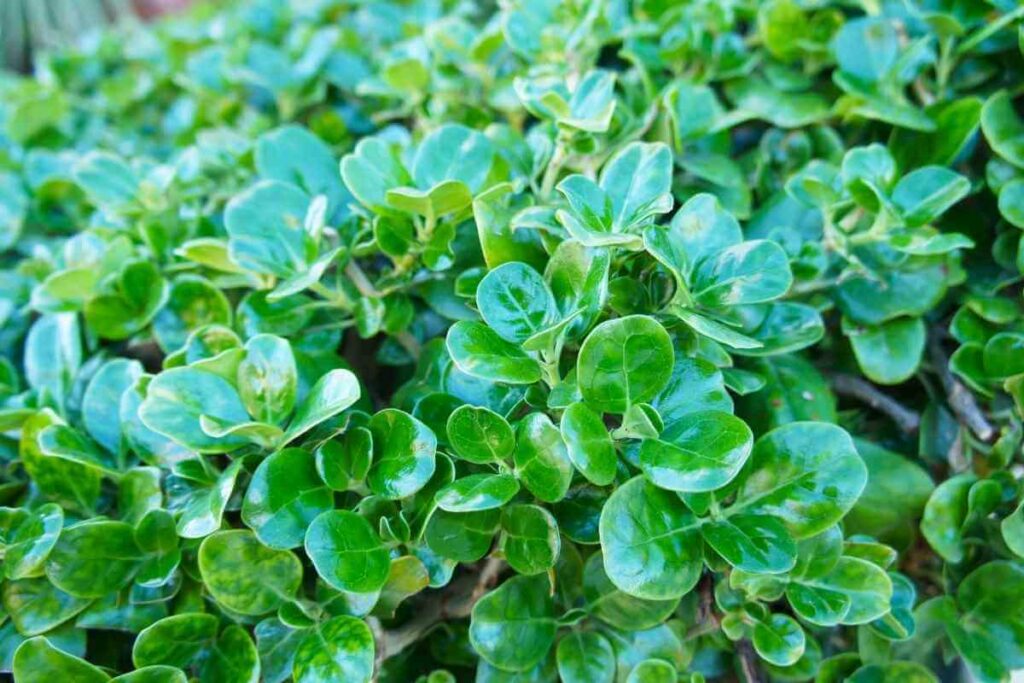
Description
This evergreen will command year round attention with the myriad of colours its foliage produces.
When it is getting maximum sunlight it has variegated green, cream-yellow and red-copper colouration, but as the seasons roll on, the deep maroon-purple it achieves will amaze you.
Grow this shrub in a pot so you can vary its position for best effect. It grows steadily and should be pruned into the shape you desire.
Don’t take chances with the frost, simply wrap this plant in a frost blanket at night, when the first frosts hit your region.
5. Pieris ‘Forest Flame’
Also Known As: Lily-of-the-valley shrub, Pieris floribunda, Forest Flame
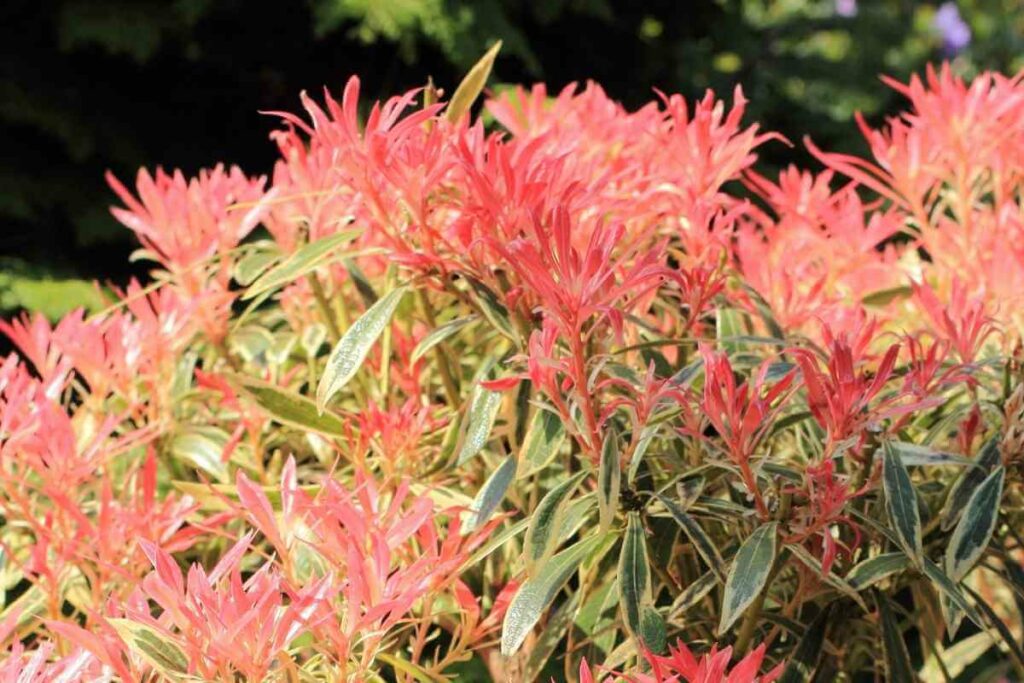
Description
You will enjoy the vibrant rouge tones of the foliage of this upright evergreen plant.
With full sun, the bright red young leaves look like licking flames, transitioning to pink, white and lastly a deep green as they mature.
You also get treated to its flowering in April to May with clusters of bell-like flowers. Forest Flame is ideal for adding colour to hedged areas or where green tones predominate.
It will tolerate some shade and get on with growing in rich, well-drained soil with some acidity.
6. Leucothoe Scarletta (‘Zeblid’)
Also Known As: Switch ivy, Scarletta
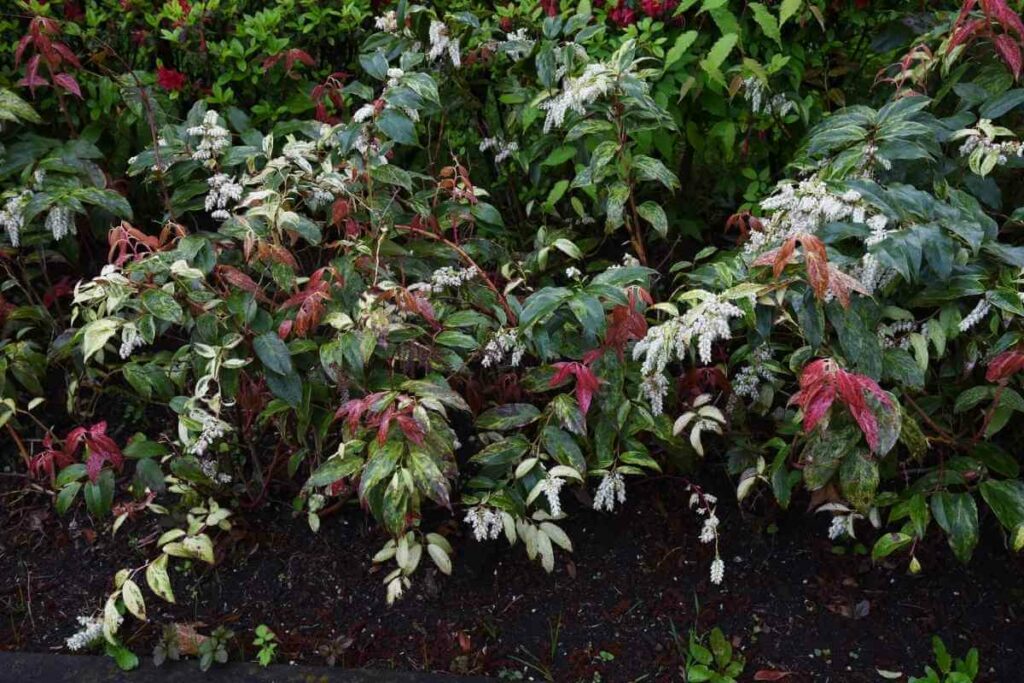
Description
This dome-shaped hardy evergreen shrub is low-growing and spreads, so you may need to keep it in check.
Its dominant feature is its dark maroon foliage with narrow glossy leaves that become deep green as they mature.
In spring, it brings forth relatively unassuming white flowers.
Scarletta is a shade-loving plant, but it looks striking in full sunlight with its leaves looking metallic.
Plant Zeblid in mildly acidic soils or pot in an ericaceous compost. It only need light pruning and shaping which is best done in late spring.
7. Photinia x Fraseri ‘Canivily’
Also Known As: Canivily, Christmas berry, or Photinia davidiana
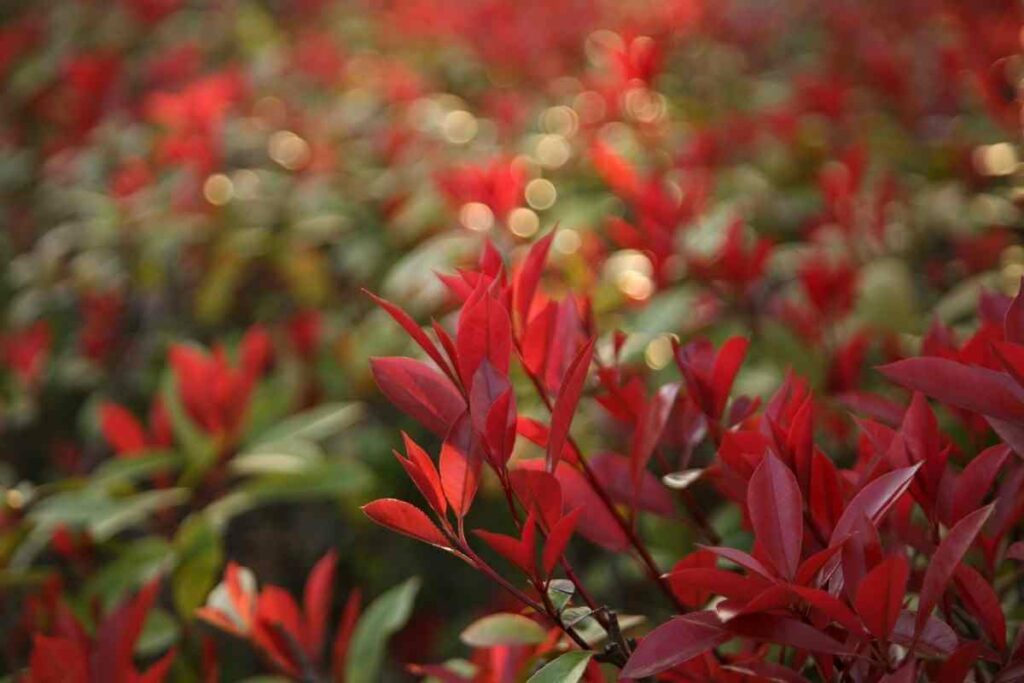
Description
This is a classic red evergreen shrub that is highly adaptable with vigorous growth in most soils.
Canivily is related to the Red Robin variety of the same species but has deeper shades of red.
Its leaves have a rich burgundy as they emerge, which matures to a dark green as they mature. Diligent cut-back and pruning encourages a profusion of the red leaves.
The Christmas berry has a flowering period between April and late May, producing loose branching clusters of white flowers that yield a red berry.
Canivily is versatile; you can use it in hedging or plant it singly in a container or in the ground.
8. Phormium ‘Sundowner’
Also Known As: New Zealand flax, Phormium tenax ‘Sundowner’ or Phormium colensoi ‘Sundowner’
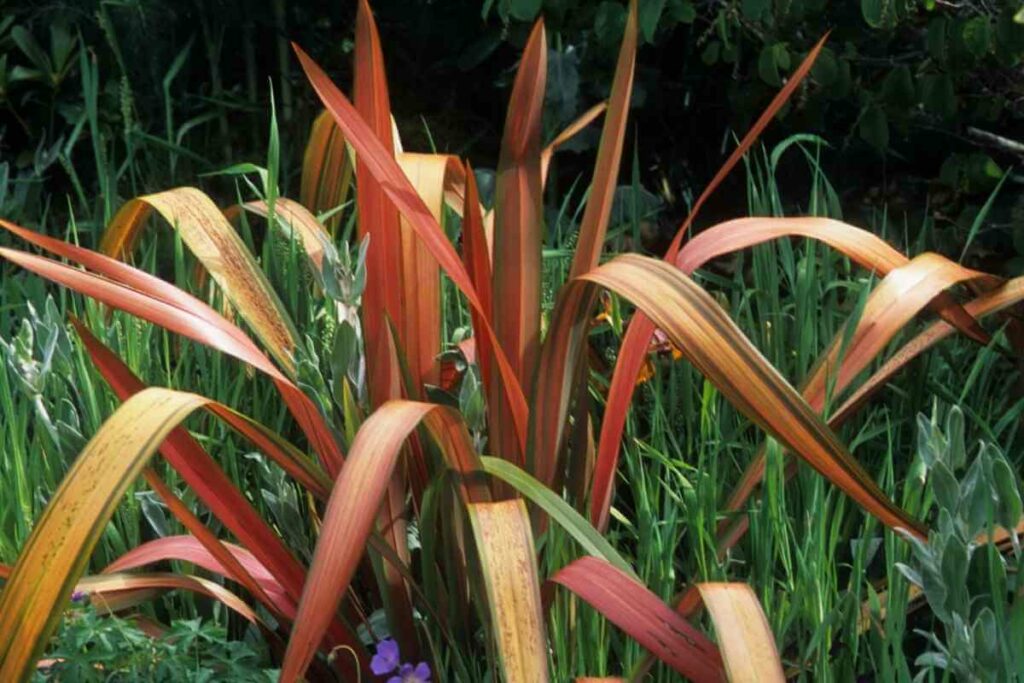
Description
This exotic evergreen plant produces long blade-like leaves that have a reddish tinge that evokes the colours of a vivid sunset.
They are so hardy that their fibrous leaves have been used to make a hemp or sisal-like material.
The erect leaves of Phormium Sundowner can achieve lengths of over 1 metre and have a hard-wearing striped texture.
This evergreen rarely flowers, but when it does its yellow flowers cannot compete with the drama of the foliage of this plant.
Sundowner performs well in most soils, feeding with decent well-rotted mulch at its base will ensure vigorous growth and vivid colouration.
9. Nandina Domestica Obsessed ‘Seika’
Also Known As: Heavenly Bamboo
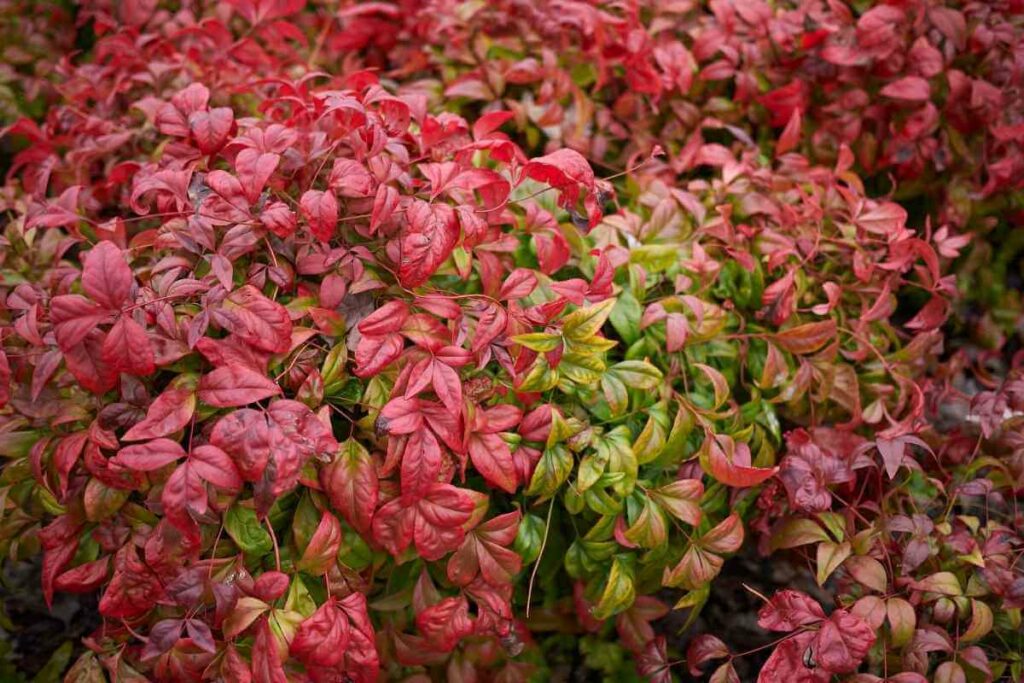
Description
The fiery red recent growth of this pleasant evergreen shrub will gab the attention, especially when it is grown in full sun.
As the leaves mature they become a rich green. It flowers in mid-summer, producing clusters of white flowers on conical panicles.
Many gardeners plant Nandina domestica in containers as patio plants, but it also can be planted to provide interest in other areas of the garden.
It grows best in full sun or partial shade in moist, but well-drained soil. Heavenly bamboo is hardy, but in particularly cold regions it may require protection.
10. Abelia × Grandiflora Sunshine Daydream
Also Known As: Abelia, ‘Abelops’, Sunshine Daydream
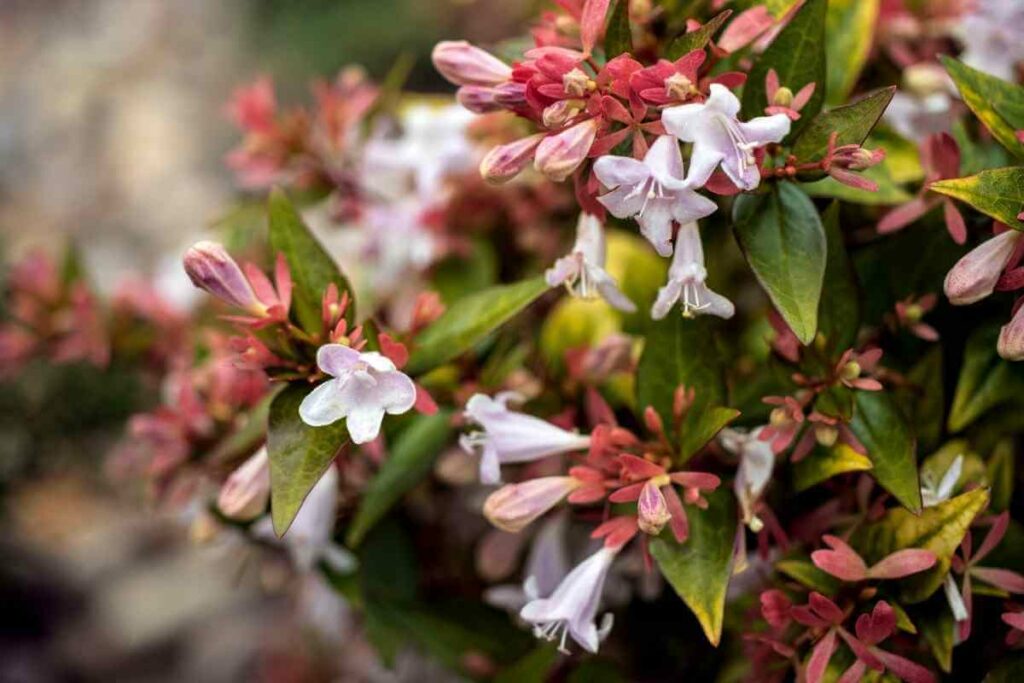
Description
This is a truly joyful semi-evergreen shrub that grows quickly with decorative foliage and fragrant flowers.
The leaves emerge with an apricot colour but as the season progresses they become variegated with green and cream edges.
It may also produce panicles of white flowers. Later in the year, you will be treated to red tones in the leaves.
It flowers between June and October with fragrant clusters of white flowers on delicate pink stalks.
Dead-heading prolongs the flowering of this evergreen shrub which can grow in any position offering full sun.
11. Euonymus Alatus
Also Known As: Rudy Haag
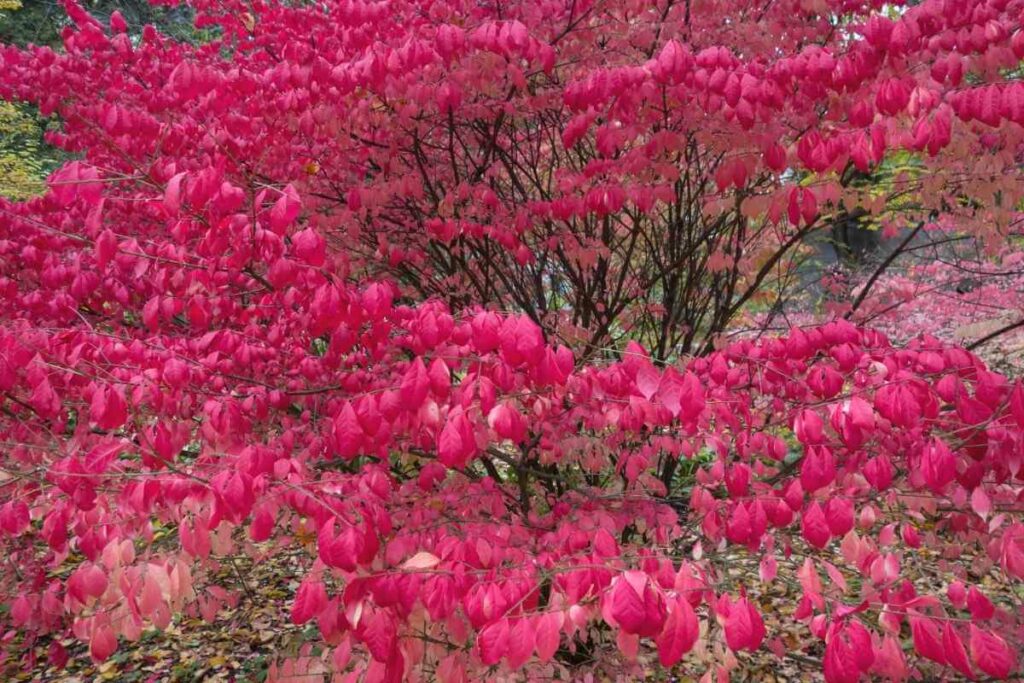
Description
Euonymus shrubs can be deciduous or evergreen with oval leaves.
Varieties like Rudy Haag give a rich red autumn colour, paired with small green flowers that yield colourful fruits with bright orange seeds.
This bushy, spreading shrub is ideal in borders or even grown as a dwarf tree.
Rounding Up
We hope this section of red evergreen shrubs have provided the inspiration you need for your garden or landscaping project.
Many of these shrubs can be cultivated in containers so that you can change their position for maximum sunlight or to see where they work best in your garden.
It’s great to appreciate the trees and shrubs you include in your garden individually so you can watch their progress throughout the year.
